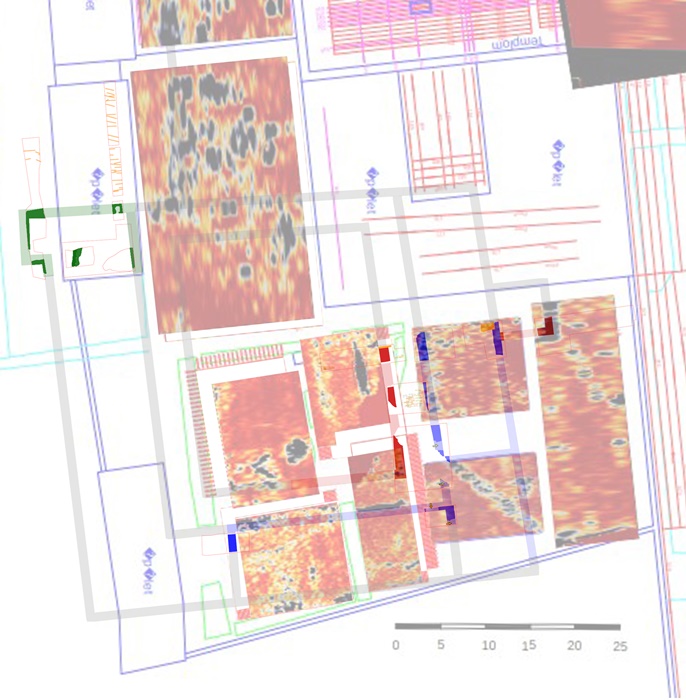 The cloister courtyard (11)
The cloister courtyard (11)
A négy oldalról kerengőfolyosó által övezett udvart csak igen kis felületen kutattuk, annyit azonban így is igazolni lehetett, hogy a kerengő mellett ez is helyet biztosított korai temetkezéseknek. Az udvar területén feltárt sírban egy valamikor 1030-1160 között elhunyt férfit temettek el. A közelében talált szórvány koponyatöredék és egyéb jelek arra utalnak, hogy a sír környezetében további temetkezésekkel is számolnunk kell. Ahol most állunk, az udvar déli szélén a geofizikai mérések egy közel kör alakú, rendkívül határozott anomáliát jeleztek. Könnyen elképzelhető, hogy itt volt a monostor udvari kútja. Elhelyezkedése jellemző a szerzetesi építészetre, hiszen a konyhát és ebédlőtermet általában a déli szárnyban alakították ki, a kutat pedig – gyakorlati okokból – sokszor ezek közelében.


The cloister courtyard (11)
The courtyard, surrounded on four sides by a cloister corridor, was only explored in a very small area, but it was possible to confirm that it was also a place for early burials. A man who died sometime between 1030 and 1160 was buried in a grave excavated in the courtyard. The scattered skull fragments and other evidence found nearby suggest that there were other burials in the area around the grave. Where we are standing now, at the southern edge of the courtyard, geophysical measurements have indicated a very defined anomaly in the shape of a circular structure. It is easy to imagine that this was the site of the monastery's well. Its location is typical of monastic architecture, since the kitchen and dining room were usually located in the south wing, and the well was often located next to them for practical reasons.